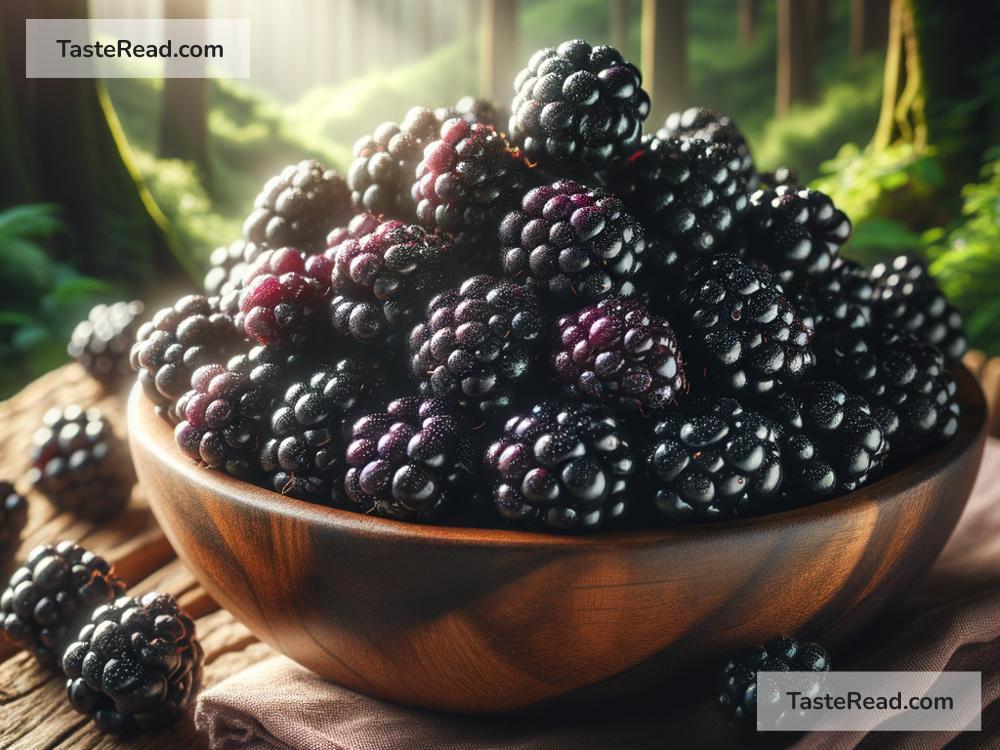The Mystery of Why Blackberries Are So Dark
Blackberries are tiny fruits packed full of flavor and nutrients. But have you ever stopped and wondered why they are so dark in color? They don’t shine like cherries or glow like bright yellow bananas. Blackberries stand out with their deep, almost black hue—giving them their name. If you’re curious about the science behind their darkness, you’re not alone! Let’s explore this fascinating mystery in simple terms.
The Role of Color in Nature
Nature has a way of using color for different purposes. Some fruits are brightly colored to attract animals and birds that will help spread their seeds. Others, like blackberries, use darker colors for their unique benefits. The color of a fruit is determined by compounds inside it called pigments. These pigments don’t just make fruits look pretty; they also protect the plant and sometimes offer health benefits for the humans (or animals!) who eat them.
The Science Behind Blackberry Color
The deep color of blackberries comes from special pigments called anthocyanins. These pigments are responsible for the dark purple, blue, and black colors in many fruits like blueberries, grapes, and plums. The name “anthocyanins” might sound fancy, but they’re just natural chemicals made by plants to serve important jobs. For blackberries, anthocyanins create their dark color and also protect the plant.
Why Does Blackberry Fruit Need Protection?
Plants, just like people, face a lot of challenges from nature. Too much sunlight can damage them, just like a sunburn harms human skin. Blackberries often grow where there’s a lot of sunlight, especially during the summer. The anthocyanins act like sunglasses for blackberries, helping them absorb extra light without getting damaged. These pigments reduce harmful effects caused by ultraviolet (UV) rays. So, if you’ve ever noticed blackberries thriving under the hot sun, you now know their dark color helps them survive the heat!
Are Blackberries Actually Black?
Here’s the funny part: blackberries aren’t truly black! They’re actually deep purple. But because the pigments are so rich and intense, they appear black to our eyes. If you were to squish a blackberry or examine its juice, you’d notice it has a bold purple or reddish tint. This trick of appearing black is another example of how anthocyanins work—they combine different shades to create that striking dark appearance.
Why So Much Anthocyanin?
You might wonder why blackberries seem to have more anthocyanins than other fruits. This has to do with their environment and survival strategy. Blackberries often grow in forests, bushes, or along trails, where their dark color helps them blend in. Animals attracted by their smell or flavor can find them, but predators unlikely to eat them might pass by because they don’t stand out. Their dark shade is part camouflage, part sunscreen, and even part advertisement for the animals that scatter their seeds.
Additionally, anthocyanins increase as the fruit ripens. Young, unripe blackberries are green or reddish because they haven’t yet developed their full pigments. By the time they mature into sweet, juicy treats, their anthocyanin levels are at their highest—and their color is darkest.
Health Benefits for Humans
Anthocyanins don’t just help blackberries survive; they also provide humans with plenty of health benefits when we eat them. Scientists have found that anthocyanins are antioxidants, which means they protect our cells from damage. Eating blackberries can help fight inflammation, lower the risk of chronic diseases, and even improve brain health. So, the same pigments that make blackberries dark offer amazing benefits to us, too!
The Fun Connection Between Color and Taste
Another interesting thing about blackberries’ color is its connection to taste. Their dark pigments are tied to their flavor profile. The richer the color, the sweeter and juicier a blackberry tends to be. That’s why picking the darkest berry from the bush often leads to the most delicious snack.
Are All Blackberries Equally Dark?
If you’ve ever looked closely at blackberries, you might notice that not all of them are equally dark. Some might be lighter, with reddish or purple tones. This variation happens because blackberries don’t all ripen at the same time. When a blackberry is fully mature, it will appear its deepest shade of black-purple. Less ripe berries are lighter because their anthocyanin levels haven’t peaked yet.
The darkness of blackberries can also depend on where they grow. Different species of blackberries exist around the world, and some may be blacker or lighter depending on their genetics or environment. For example, if a blackberry grows in shaded areas with less sunlight, it might not develop as much pigment as one growing in full sun.
A Natural Mystery Worth Appreciating
The darkness of blackberries might seem simple on the surface, but it’s really an amazing result of how nature works. Anthocyanins, sunlight protection, ripeness levels, and survival strategies all play a role in creating these uniquely dark fruits. Next time you bite into a juicy blackberry, think about all the fascinating science behind its color. It’s not just delicious—it’s a masterpiece of nature’s design!


